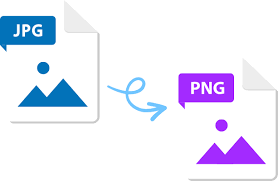Introduction:
The digital landscape is flooded with various image formats, each serving different purposes and catering to specific needs. Two widely used formats, JPG (or JPEG) and PNG, play significant roles in the realm of digital images. In this article, we’ll explore the transition from JPG to PNG, understanding the basics of each format and the benefits that PNG offers.
Understanding JPG:
Joint Photographic Experts Group (JPEG) developed the JPG format to compress images while maintaining a reasonable level of quality. JPG uses lossy compression, meaning that some information is discarded during compression, resulting in a smaller file size. This makes JPG ideal for photographs and images with smooth color gradients.
The key features of JPG include:
- Lossy Compression: JPG compresses images by removing some details, which can lead to a reduction in quality.
- Color Space: It supports millions of colors, making it suitable for photographs and images with complex color variations.
- Compatibility: JPG is widely supported across various devices and platforms, making it a universal choice for sharing images.
The Emergence of PNG:
Portable Network Graphics (PNG) emerged as a solution to some of the limitations of JPG. PNG uses a lossless compression algorithm, preserving all image data without sacrificing quality. This makes PNG suitable for graphics, images with transparency, and applications where image fidelity is crucial.
Key features of PNG include:
- Lossless Compression: PNG retains all image data during compression, resulting in higher quality compared to JPG.
- Transparency: PNG supports alpha channels, allowing images to have transparent backgrounds, a feature not inherent in JPG.
- Sharpness: PNG is well-suited for images with sharp edges, solid colors, and text, making it an excellent choice for logos and graphics.
Benefits of Transitioning to PNG:
- Transparency: One of the significant advantages of PNG is its ability to support transparent backgrounds. This is particularly valuable in web design, graphic design, and other applications where image transparency is crucial.
- Lossless Quality: PNG’s lossless compression ensures that no image data is sacrificed, making it the preferred choice for preserving image quality in professional settings.
- Text and Graphics: PNG excels at displaying sharp edges and solid colors, making it ideal for logos, icons, and other graphical elements.
- Web Development: PNG’s support for transparency and sharpness has led to its widespread adoption in web development, where crisp graphics and logos are essential.
Conclusion:
While both JPG to PNG have their places in the digital world, understanding their strengths and weaknesses helps users make informed decisions based on their specific needs. The transition from JPG to PNG is often driven by a desire for higher image quality, transparency, and suitability for specific applications. As technology continues to evolve, these formats may see further refinements, but for now, being aware of their characteristics empowers users to choose the right format for their digital images.


